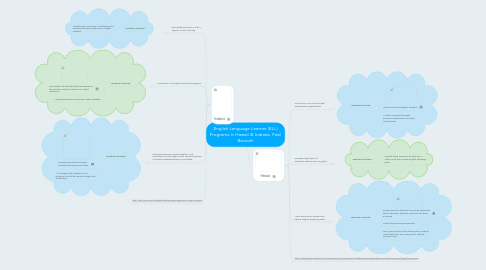
1. Indiana
1.1. Eventually place ELL's into a regular course of study
1.1.1. Teaching Strategy:
1.1.1.1. Provide extra resources until testing and assessments show they are no longer needed.
1.2. Provide ELL's bilingual-bicultural programs
1.2.1. Teaching Strategy:
1.2.1.1. The teacher should educate themselves on the specific culture of each ELL in their classroom.
1.2.1.2. A bilingual teacher should be made available
1.3. Develop planning, implementation, and evaluation of ELL program with the participation of parent centered advisory committee
1.3.1. Teaching Strategy:
1.3.1.1. Principal should form parent centered advisory committee.
1.3.1.2. All changes and updates to ELL program should be made through said committee.
1.4. http://ecs.force.com/mbdata/mbstcprofexc?Rep=ELP14&st=Indiana
2. Hawaii
2.1. Provide ELL's access to equal educational Oppotunities
2.1.1. Teaching Strategy:
2.1.1.1. Offer time with bilingual teachers
2.1.1.2. Monitor progress through periodic assessment and make adjustments
2.2. Develop high levels of academic attainment in English
2.2.1. Teaching Strategy:
2.2.1.1. Provide extra resources to help ELL's catch up to their native english speaking peers
2.3. Meet same state standard as native english speaking peers
2.3.1. Teaching Strategy:
2.3.1.1. Review specific materials from state standards test to ascertain whether retention has been achieved
2.3.1.2. Hold intermediate assessments
2.3.1.3. Use 5 point action plan developed in activity one to take into account specific cultural context of ELL.

